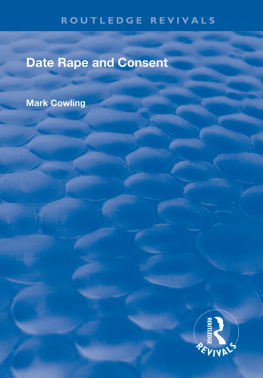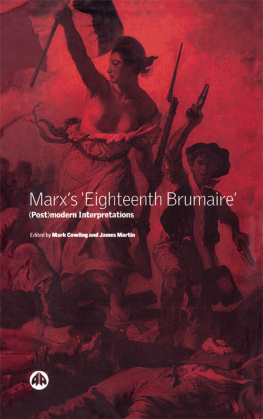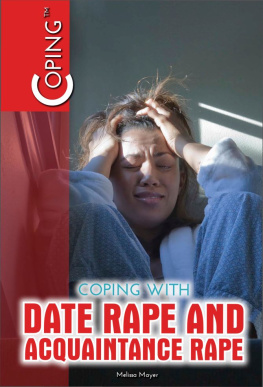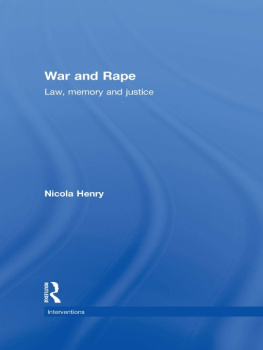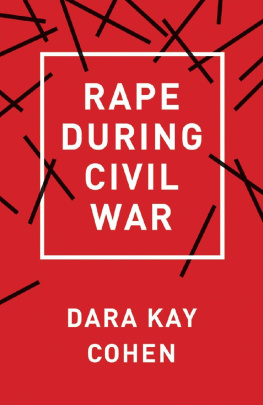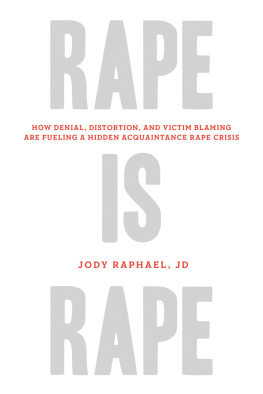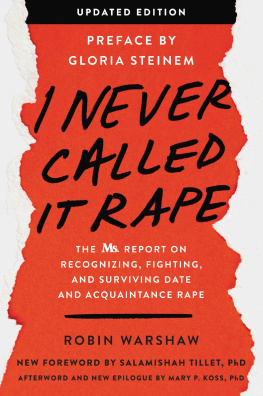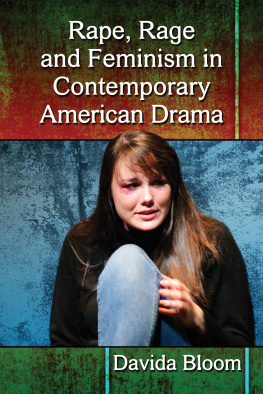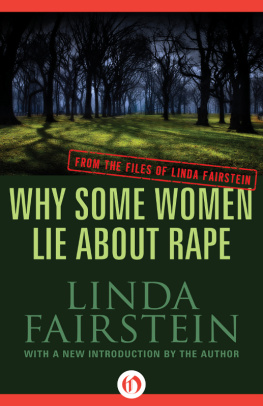Date Rape and Consent
Dedicated to my father, John Cowling, and the memory of my mother, Rosemary Cowling
First published 1998 by Ashgate Publishing
Reissued 2018 by Routledge
2 Park Square, Milton Park, Abingdon, Oxon, OX 14 4RN
711 Third Avenue, New York, NY 10017, USA
Routledge is an imprint of the Taylor & Francis Group, an informa business
Copyright Mark Cowling 1998
All rights reserved. No part of this book may be reprinted or reproduced or utilised in any form or by any electronic, mechanical, or other means, now known or hereafter invented, including photocopying and recording, or in any information storage or retrieval system, without permission in writing from the publishers.
Notice:
Product or corporate names may be trademarks or registered trademarks, and are used only for identification and explanation without intent to infringe.
Publishers Note
The publisher has gone to great lengths to ensure the quality of this reprint but points out that some imperfections in the original copies may be apparent.
Disclaimer
The publisher has made every effort to trace copyright holders and welcomes correspondence from those they have been unable to contact.
A Library of Congress record exists under LC control number: 98072629
ISBN 13: 978-1-138-61155-9 (hbk)
ISBN 13: 978-0-429-45939-9 (ebk)
This book represents my attempt to answer a puzzle: according to official conviction rates, rape is a problem directly affecting some four to five hundred very unfortunate women in England and Wales each year. According to some of the surveys I discuss, about one woman in four could be expected to be a victim of rape or attempted rape. It seemed clear to me from the start that the question of how rape is defined and identified must be an important part of the answer to the question of how this massive discrepancy comes into being. Thus philosophical issues concerning the definition of concepts could play an important part in making sense of an important social problem. I cannot pretend to have solved the problem of the extent of rape, or of how it should be defined, but I have presented many of the issues and arguments needed for anyone who wishes to make sense of it.
Along the way I have incurred debts to many people. The School of Social Sciences at the University of Teesside has provided a congenial working atmosphere and some relief from teaching and administration. A whole series of people have offered useful advice, including Professor Roy Boyne, Sue Lees, who was kind enough to comment on an article in which I explored some of the themes of the book, Jill Radford, Paul Reynolds and Roz Waddington who read most of the book and provided detailed comments, Walter DeKeseredy, John Fekete and Katharine Kelly, who took the time to answer letters from me, and the Women, Gender and Sexuality research group of the Centre for Social and Political Research at the University of Teesside, who made many useful comments on a presentation of my work. My daughter Camillia Cowling proof-read the book and found many more mistakes than I had bargained for.
The staff at Ashgate have been most tolerant of missed deadlines caused by various unavoidable events, and Christine Davis has been a meticulous and helpful proof-reader.
My family have been most helpful in humouring my obsessions and occasional neglect of other tasks.
I should stress particularly strongly that the opinions expressed below are my own, as I know that some of the people who have helped disagree strongly with some of them.
The book is dedicated to my parents, who brought me up with an interest in the rational discussion of difficult and emotive issues.
1 Mark Cowling, TJate Rape and Consent, Contemporary Politics, Vol. 1, No. 2, 1995, pp. 57-72.
Date rape has been defined by one of the leading US academics studying the area as: a specific type of acquaintance rape that involves a victim and a perpetrator who have some level of romantic relationship between them. and, to a lesser extent, lawyers. There is, as can be seen from the bibliography of this book, a very large literature on the issue. In Canada there was a major outcry about various forms of sexual violence, including date rape, in 1993, followed by sceptical academic and press commentary, followed by relative silence.
In this book I have two main, interlocking, aims. The first is simply to describe and attempt to make sense of the largely American literature on date rape. What can a British audience learn from it? Given that there has been a much more intensive discussion of date rape in the USA for the last fifteen years or so, are there academic pitfalls which we can avoid? The second is to ask philosophical questions about where the boundaries between rape and non-rape should be drawn: what conduct deserves to be called rape, and what should be done about conduct which perhaps has some similarity to rape but should simply be seen as unethical or bad mannered? This second question is very important, and has a considerable overlap with the first. Everyone has to have some kind of an attitude to the second question, from the male chauvinist traditionalist who thinks that British courts convict too many innocent men of rape, to the radical feminist who comes close to identifying all heterosexual sex as rape. The importance of the boundary question for our understanding of the American literature on date rape is that much of the literature offers findings that rape is much more extensive than court or police records show. Plainly, the more all-embracing our conception of rape, the more of it there is to be found. In turn this issue leads on to more practical questions: what can or should be done about the very large number of unreported and unconvicted rapes? How much do the more extensive definitions of rape lead us towards the notion that women commit rape on men, and if we accept that they do, what, if anything, needs to be done about it?
There is a strong case that we in Britain should be taking more of an interest in date rape and in the US discussion of it. Feminist activists and academics have a convincing case that rape is not taken sufficiently seriously by British courts, and there is also a widespread view that for every incident of rape reported to the police many more go unreported. Although there is every reason to think that this view is true, there is less agreement on the exact extent of unreported rape. This lack of agreement has been exacerbated by the partial success of feminists in shifting public assumptions about rape. From a rare crime committed only by maniacs it has come to be seen as a more widespread phenomenon, notably in the recognition that wives should be legally protected from rape by their husbands. There has also been a limited shift towards the feminist view that women deserve the protection of the law from rape irrespective of their previous history, their clothing or where they choose to go and when. In a situation where customs and assumptions are changing it is only to be expected that the boundaries of what counts as acceptable behaviour will also be debated.
We also need to take more of an interest in date rape because there is likely to be more of it in modern Britain. From a situation where sex before marriage was frowned upon, we have moved to a society where the average new bride or groom has had five previous partners; Rather than having a Canadian-style panic about date rape it is better for us to discuss carefully what is involved in sexual consent, hoping to achieve a consensus, or failing that, an understanding of our differences. It would probably be desirable to have a large-scale British survey of sexual assault on the lines of those carried out in the US and Canada. However, given the extent of debate which followed the US and Canadian surveys, particularly concerning the way in which the questions were posed, it would be sensible to clarify our concepts first. This book aims to make some contribution to that process.

